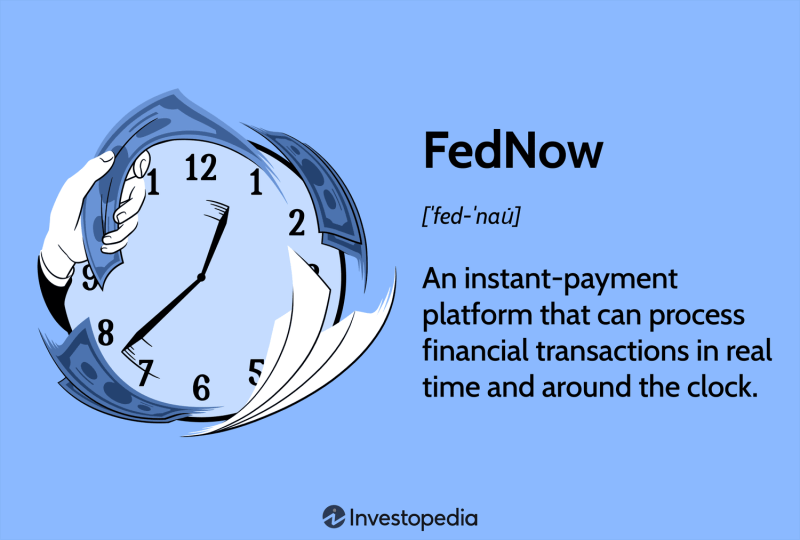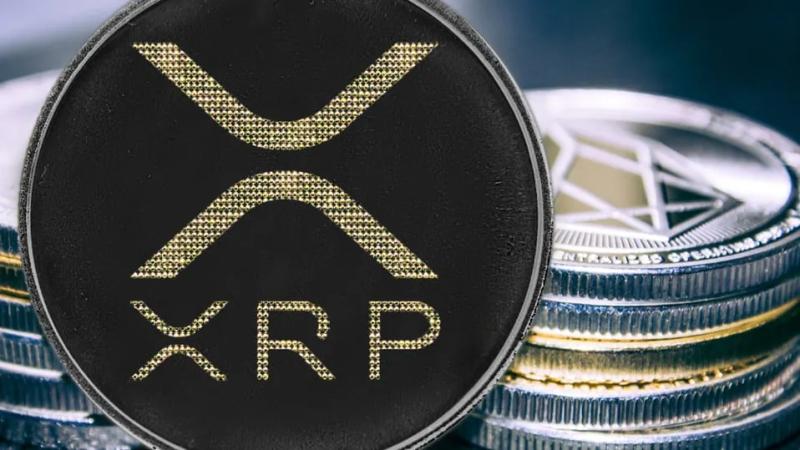
FedNow is a new instant payment service launched by the Federal Reserve in July 2023. Using the FedNow Service, financial institutions can give customers real-time payment capabilities, executing transactions in a matter of seconds even outside of normal banking hours.
In other words, if your bank or credit union participates in the FedNow program, you can send and receive money instantaneously and 24/7—even on holidays, weekends, and off-hours. FedNow’s seamlessness and around-the-clock availability represent an improvement over the Automated Clearing House (ACH) network, the current standard for transferring funds electronically that takes up to three business days to complete a transaction.
Key Takeaways
- FedNow, launched by the Federal Reserve in July 2023, is an instant payment platform that can process financial transactions in real time and around the clock.
- Individuals and businesses cannot enroll directly in FedNow, but can benefit from the service’s streamlined funds transfers through a participating bank or credit union.
- The platform could help you receive your paycheck more quickly and simplify the process for making on-time bill payments.
What Is FedNow?
The FedNow Service is an instant payment infrastructure inaugurated by the Federal Reserve in July 2023. Using the central bank’s new platform, participating financial institutions can give their customers the ability to send and receive money within seconds.
In addition to reducing the time it takes to transfer funds, the new platform makes it possible to process transactions anytime, including after hours or on weekends and holidays.
The idea of sending and receiving payments in real time may not seem all that novel to you, particularly if you’ve used services like Venmo, Cash App, and Zelle. These payment-processing apps are unlikely to go anywhere, but if your bank participates in FedNow, you will have an additional option for completing nearly instantaneous financial transactions.
FedNow’s integrated clearing functionality allows it to process transactions much more quickly than the Automated Clearing House (ACH) system—the current platform in the United States that allows consumers, businesses, and government entities to send and receive funds electronically. ACH transactions typically take one to three business days to complete, and although Same Day ACH became available in 2016, even that option is far from instantaneous.
Given this time frame, the Fed classifies Same Day ACH as a “faster payment” solution, so FedNow earns the title of an “instant payment” platform.
Note
In the near term, ACH appears unlikely to disappear and probably will still be used for many types of transactions. However, we could see financial institutions increasingly shift toward more instant options like FedNow. The Fed eventually may seek to make the FedNow platform operate in tandem with ACH payments.
How FedNow Works
The anatomy of a FedNow transaction is much like the process for other instant payment platforms. You initiate a payment using an interface set up by your financial institution. Your bank verifies that you have enough funds to make the payment and then initiates the transaction through the FedNow platform.
Once the payee’s financial institution approves the transaction, FedNow withdraws the funds from your account and deposits them in the destination account. The service also includes a request for payment (RFP) feature with the potential to help businesses streamline their electronic invoicing.
While the process seems straightforward enough, the FedNow system must carry out two key functions to facilitate the transfer of funds:
- Clearing involves the communications about a payment between the sending and receiving financial institutions, which may include checking for fraudulent activity.
- Settlement describes the actual process of debiting the funds from the payer’s account and crediting them to the payee’s account.
The FedNow system executes both of these steps in a matter of seconds.
FedNow uses International Organization for Standardization (ISO) 20022 standards—an international norm for sending and receiving electronic messages that helps make financial transactions more secure and facilitates interoperability with other payment systems.
The FedNow Service allows for transactions up to a limit of $500,000. However, the Fed sets a default limit of $100,000 per transaction, allowing participating financial institutions to adjust this cap as needed to meet their customers’ needs. The Fed plans to assess the overall cap on FedNow transactions on an ongoing basis, adjusting the limit as needed.
Benefits and Drawbacks of FedNow
Access to FedNow’s instant payment capabilities provides plenty of advantages. First and foremost, the platform makes sending and receiving money quicker and easier, giving people more options to manage payments more effectively.
This flexibility could prove particularly beneficial to people on a tight budget. For instance, receiving a paycheck or other payments immediately rather than having to wait a few days could eliminate the need to resort to expensive payday loans.
What’s more, streamlining the process of paying bills could help people avoid late fees, and because the FedNow System verifies that there are sufficient funds in the payer’s account before processing a transaction, it offers built-in protection against overdraft fees.
Beyond facilitating on-time bill payments, the ability to transfer funds instantly from account to account could make it easier to manage your cash flow and your overall finances. Similar benefits apply to businesses, which can control and forecast cash flows more effectively, and financial institutions themselves may enjoy a reduction in processing costs while helping their customers.
However, a drawback of the FedNow Service is that in order to benefit from the system, all institutions that are a party to the transaction must be using the service. If, for instance, you are making multiple payments, but some of the institutions on the other end of the transactions are not using the FedNow system, then you could end up with an overdraft because the transactions from the institutions that do not use FedNow will be processed via ACH—possibly triggering an overdraft.
The Future of FedNow and What It Means for You
From a consumer’s perspective, FedNow means that you may receive quicker access to your paycheck or other incoming payments, while you will have a streamlined tool to pay your bills and manage your accounts more effectively.
Your ability to harness the power of FedNow’s instant payment system depends on your financial institution’s participation in the program. The Fed makes the service available to all U.S. banks and credit unions, but financial institutions must opt in to begin offering FedNow-driven transfers to their customers.
There is no FedNow app for consumers and businesses to use directly. Instead, your bank or credit union will enable this instant payment functionality through its own website or mobile app. You may not see the name “FedNow” associated with the funds transfer capabilities offered by your bank, but FedNow is the “highway” that sends instant payment to their destination.
While you can’t enroll in FedNow as an individual, you could ask your bank or credit union if it provides you with access to these instant payment services.
Looking to the future, it remains to be seen how financial institutions will adopt FedNow’s capabilities and the full extent of ways for consumers and businesses to reap the benefits of instant payments. The Fed anticipates that, as more banks and credit unions join the FedNow platform, instant payments will solidify their role as “a routine part of everyday commerce.”
What Is the Difference Between FedNow and Real-Time Payments?
The Federal Reserve—the central bank of the U.S.—operates the FedNow Service, launched in July 2023. In contrast, the real time payments (RTP) network is an instant payment platform operated by a consortium of large U.S. banks. Both platforms can fulfill similar purposes, facilitating instant financial transactions between businesses and consumers.
How Much Does It Cost to Conduct a FedNow Transaction?
The Fed charges financial institutions a monthly fee to participate in the FedNow Service, along with a small fee per transaction. It remains to be seen how much of these costs banks and credit unions will pass on to their customers.
How Much Does FedNow Charge?
FedNow charges a $25 monthly participation fee for each routing transit number (RTN) that enrolls in the service. In addition, it charges fees of 4.5 cents per transaction to the sender’s financial institution. Filing a request for payment (RFP) message via the FedNow platform comes with a fee of 1 cent for the requester.
Can FedNow Freeze Your Account?
No. Although your financial institution must verify that you have sufficient funds to cover any payments through FedNow, neither the Federal Reserve nor the FedNow Service has access to individual bank accounts.
How Is FedNow Different from Fedwire?
The Fedwire Funds Service is a system facilitating real-time financial transactions between participating financial institutions that have an account with the Federal Reserve. Unlike FedNow, which has a transaction limit of $500,000, Fedwire transactions have no such cap, making the service useful for large-value transfers. However, the Fedwire service is available only during business hours, meaning it can’t match FedNow’s 24/7 coverage.
The Bottom Line
The Federal Reserve’s FedNow Service allows banks and credit unions to offer instant payment capabilities to their customers, even outside of normal banking hours. From reducing the time it takes to receive your paycheck to facilitating instantaneous bill payments, FedNow has the potential to add flexibility and swiftness to help businesses and individuals manage cash flows and better control their financial lives.
Article Sources Investopedia requires writers to use primary sources to support their work. These include white papers, government data, original reporting, and interviews with industry experts. We also reference original research from other reputable publishers where appropriate. You can learn more about the standards we follow in producing accurate, unbiased content in our editorial policy.
-
Board of Governors of the Federal Reserve System. “Federal Reserve Announces That Its New System for Instant Payments, the FedNow® Service, Is Now Live.”
-
Board of Governors of the Federal Reserve System. “FedNow® Service: Additional Questions and Answers.”
-
Nacha. “Same Day ACH Resource Center.”
-
Federal Reserve Banks Financial Services. “FedNow℠ Service,” Page 4.
-
Federal Reserve Banks Financial Services. “Request for Payment Is a Powerful Instant Payments Tool.”
-
Federal Reserve Banks Financial Services. “FedNow℠ Service,” Page 1.
-
Federal Reserve Banks Financial Services. “Federal Reserve Announces FedNow℠ Service Pricing Approach, Credit Transfer Limit.”
-
Merchant Cost Consulting. “What Is FedNow? Federal Reserve Payment System Explained.”
-
Board of Governors of the Federal Reserve System. “FedNow® Service: Frequently Asked Questions.”
-
The Clearing House. “RTP®.”
-
Board of Governors of the Federal Reserve System. “Fedwire Funds Services.”
Open a New Bank Account Advertiser Disclosure × The offers that appear in this table are from partnerships from which Investopedia receives compensation. This compensation may impact how and where listings appear. Investopedia does not include all offers available in the marketplace.







